Menu
The Way We Eat at Home
Essential
Essential
Utensils and vessels used for cooking, consuming and storing food are essential to human life. We use them and throw them away as ordinary commodities, but we also collect and admire them as treasures.
Lacquerware and ceramic tableware items have been produced in Asia since prehistoric times. The art of ceramics has a particularly rich history in China, where the world’s oldest pottery fragments have been found. Its evolution over millennia demonstrates the innovation and perfection of technology in modelling, decorating, glazing, and firing. Artists such as Liu Jianhua and Liu Xiaoxian have drawn on this history, repurposing ceramics to express contemporary ideas with the help of workshops that have operated for centuries.
Today, plastic and glass are common for their convenience and affordability. Patty Chang’s glass sculptures highlight how these same properties are disastrous for the ecosystem, with effective recycling one of our greatest challenges.
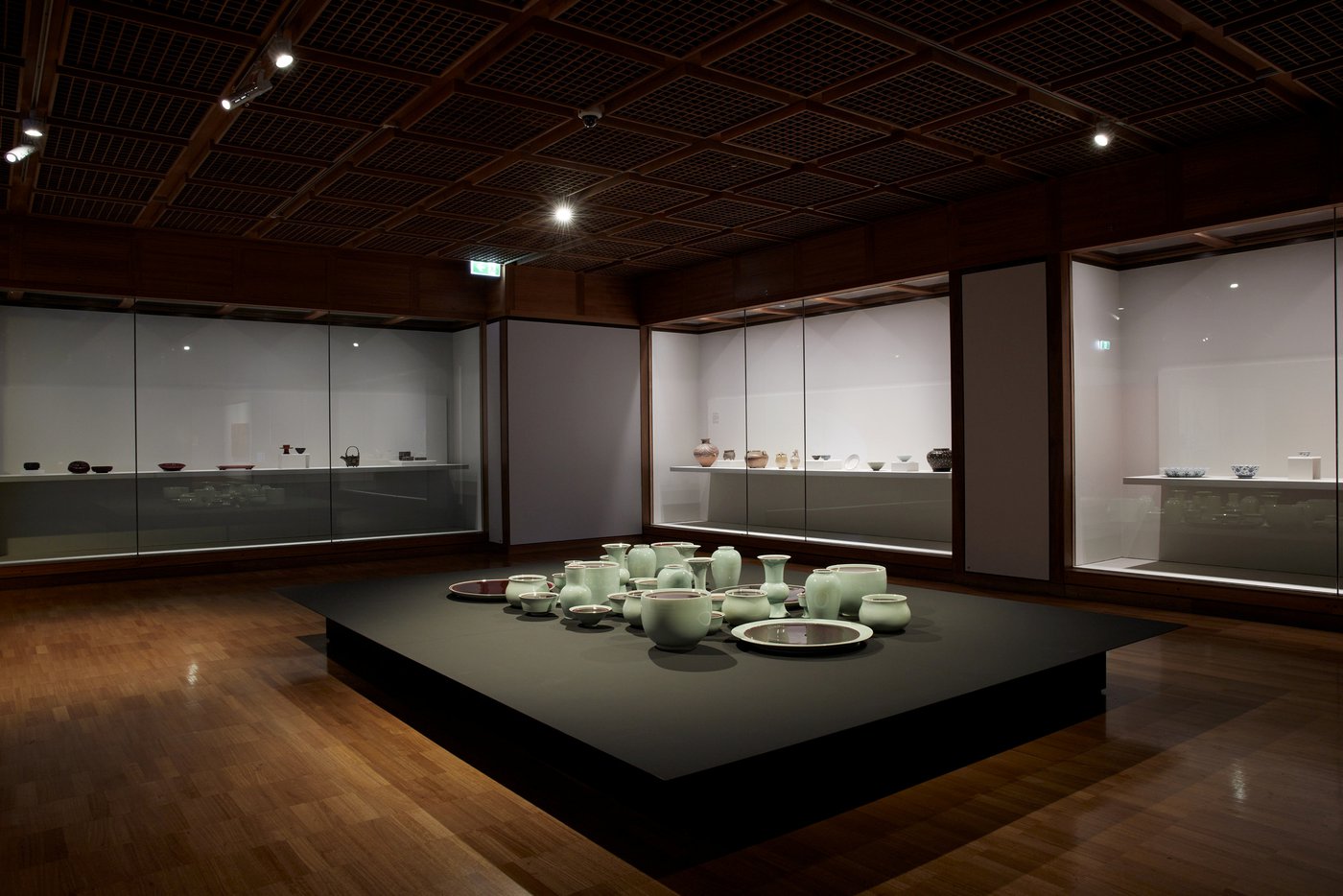
An installation view of ‘The Way We Eat’ exhibition, Art Gallery of New South Wales
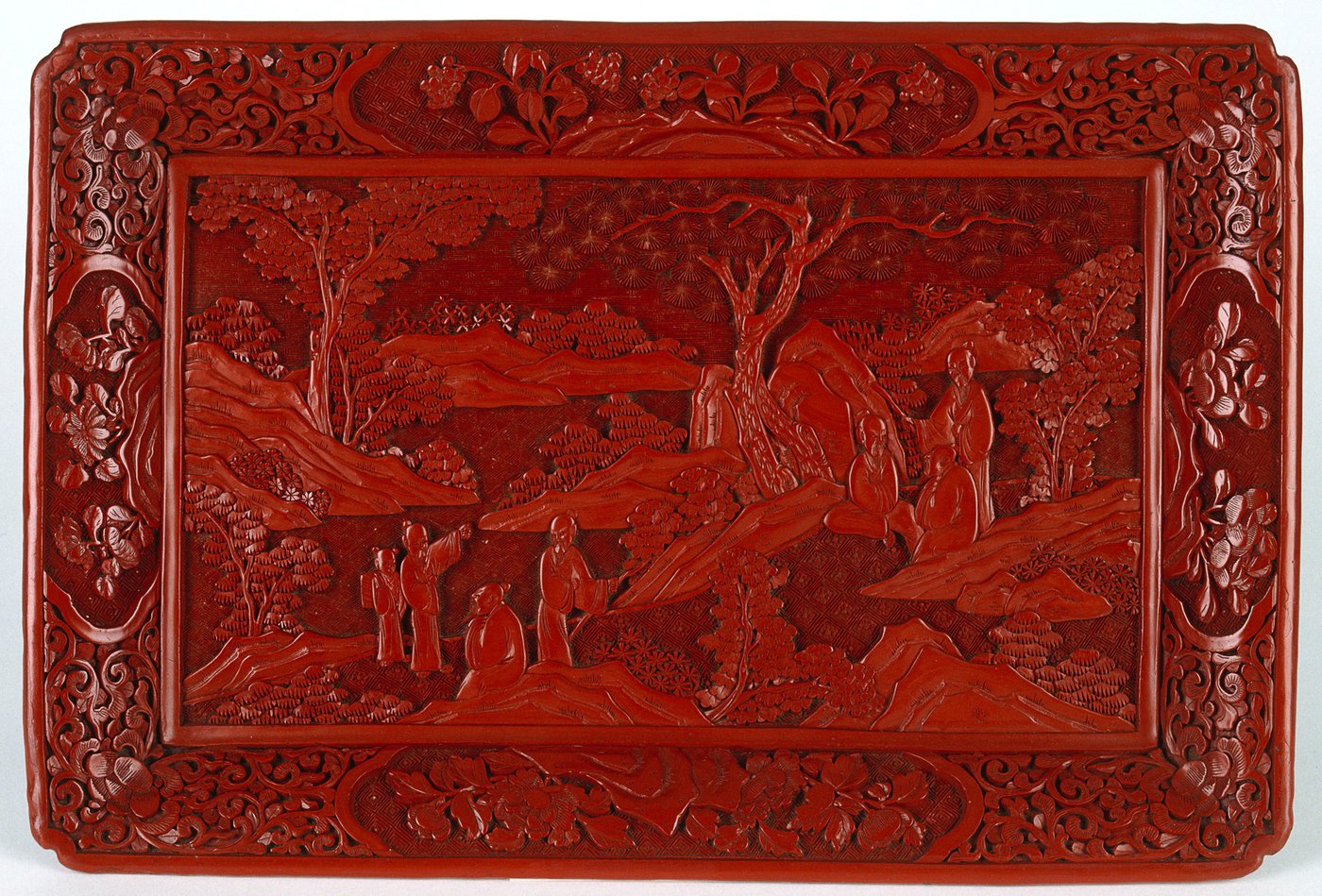
Tray with scene of scholars in discussion in a landscape
China
Qing dynasty (1644–1911)
carved cinnabar-red lacquer
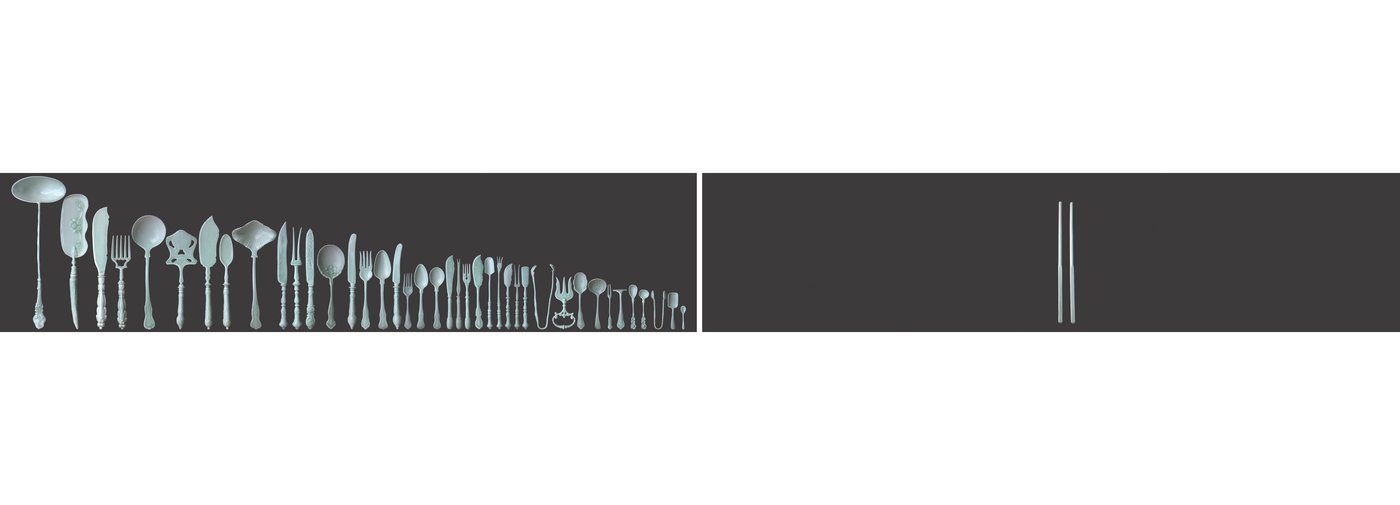
The way we eat
Liu Xiaoxian
China/Australia, b1963
40 pieces of cutlery and 2 chopsticks; porcelain with celadon glaze
With this work, the artist has created a strong visual comparison between the extravagance of Victorian era cutlery with simplicity of a pair of Chinese chopsticks.
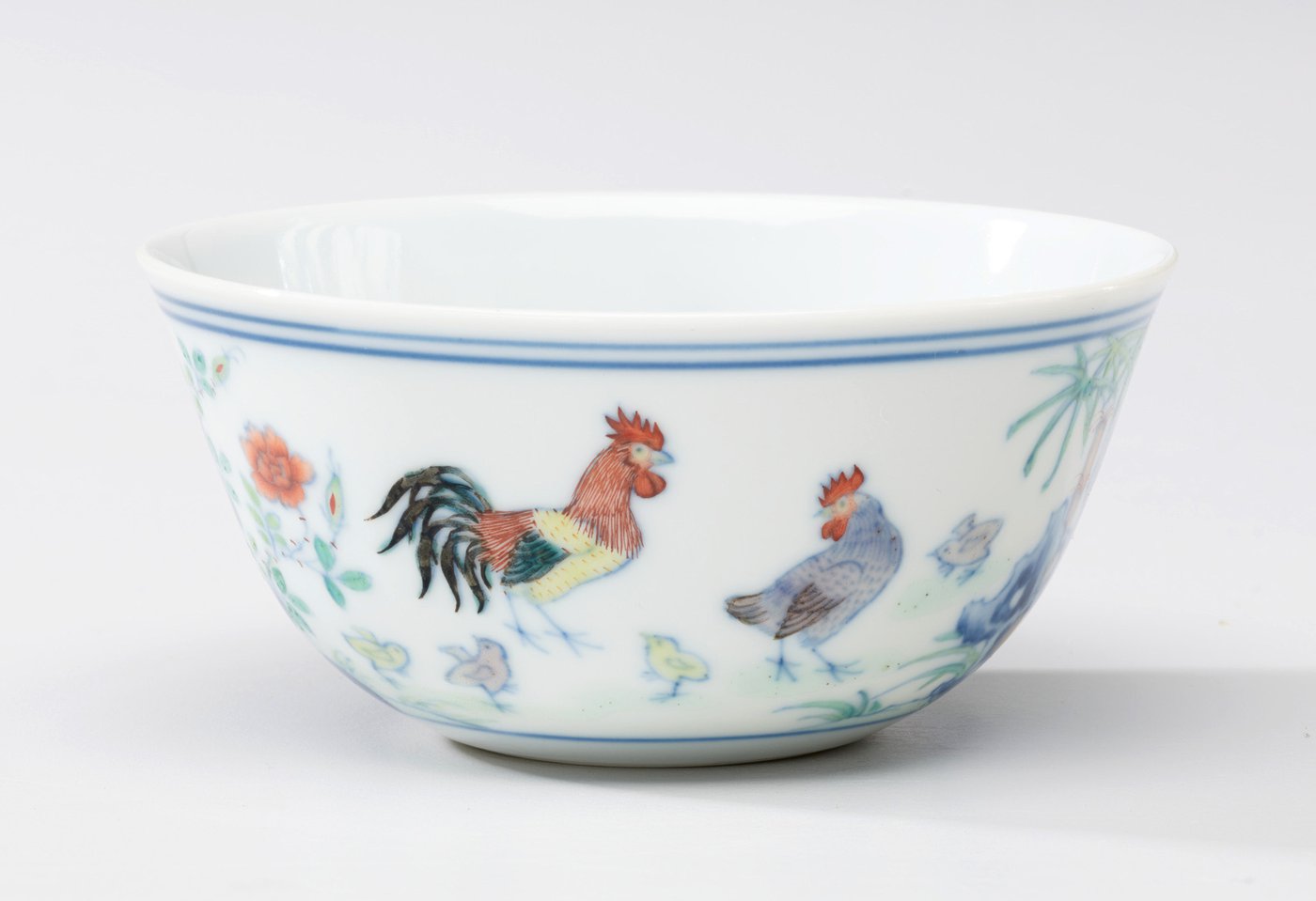
Chicken cup
China
Qing dynasty, Yongzheng–Qianlong periods (c1725–50)
porcelain with underglaze blue and doucai overglaze enamels
A family of brightly painted chickens decorate this delicate wine cup. In Chinese, the words for ‘chicken’ and ‘luck’ sound the same: ji.

Bowl with ‘ruyi’ cloud motif
China
Ming dynasty (1368–1644)
carved black lacquer
The precisely carved cloud shape decoration is called ruyi, which means ‘as you wish’ in Chinese.

Jar with painted decoration
China
Neolithic period, Majiayao culture (c2350–2050 BCE)
earthenware
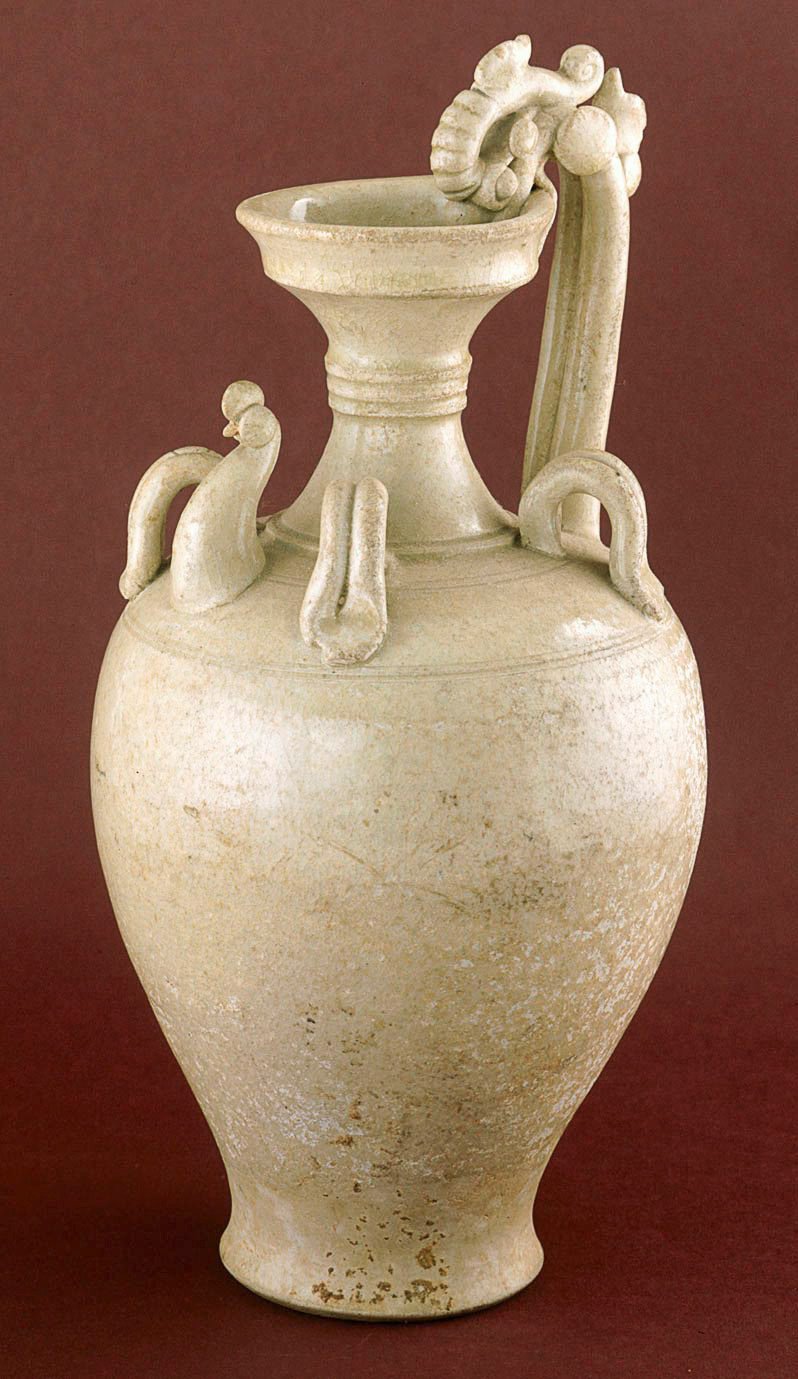
Ewer with chicken head and dragon handle
China
Sui–Tang dynasties (581–907)
stoneware with clear glaze

Tea bowl with slip design of plum blossom
China
Song–Yuan dynasties (960–1368)
stoneware with brown glaze; slip painted

